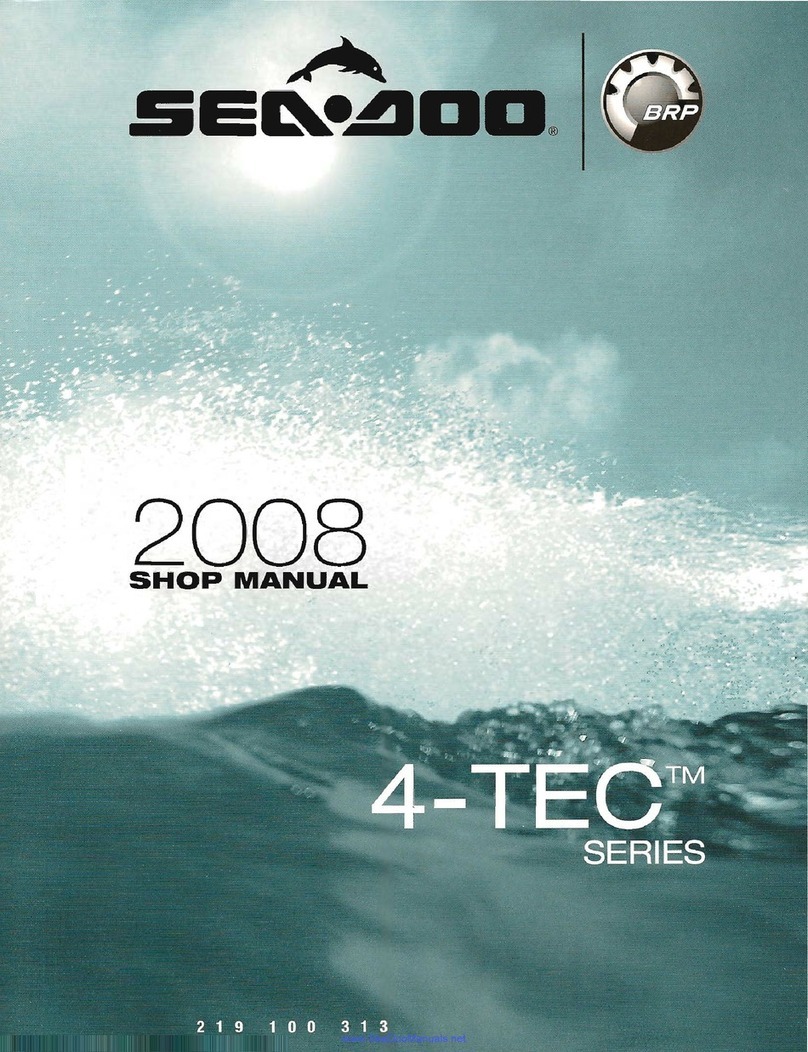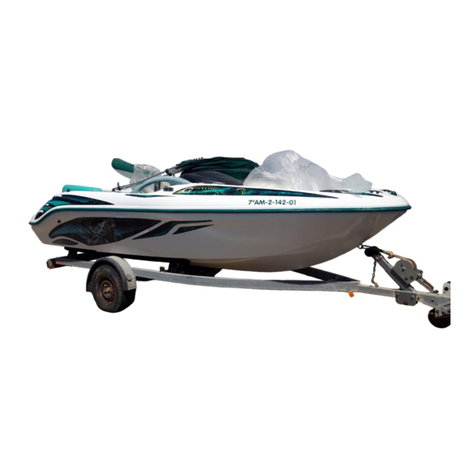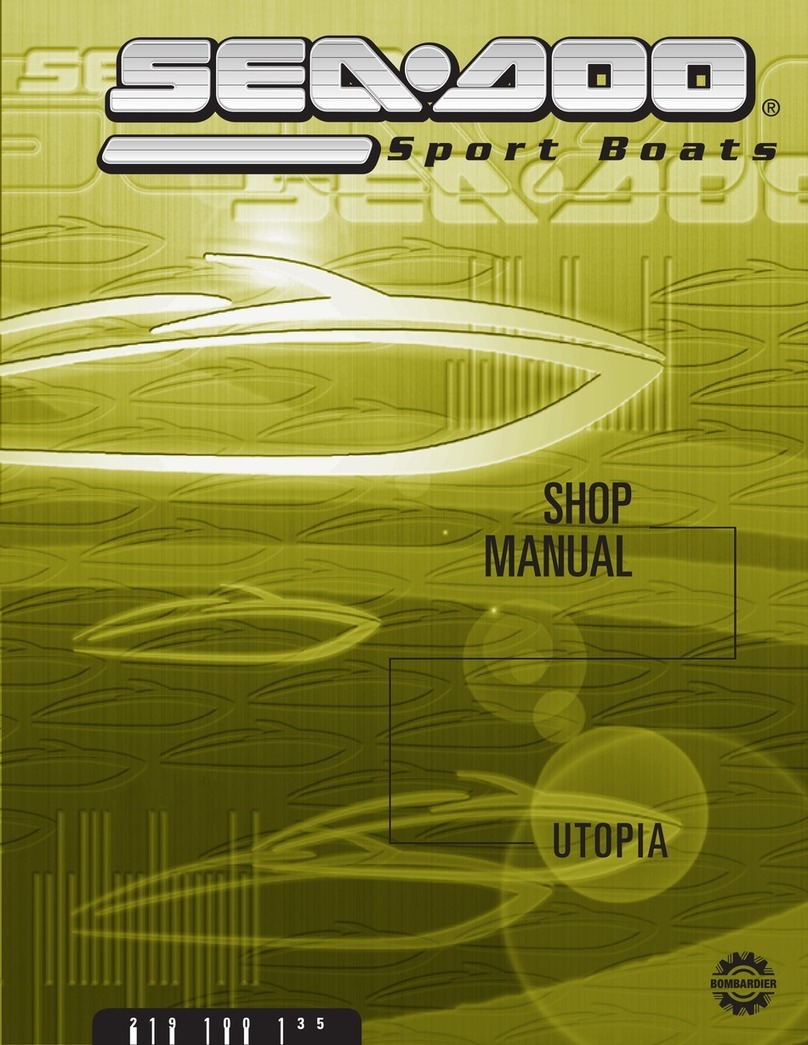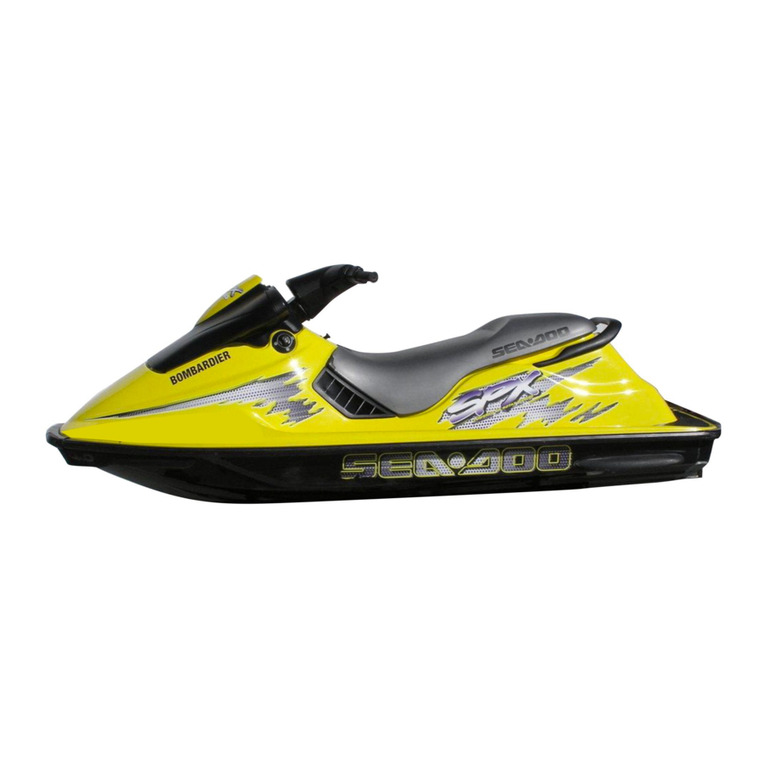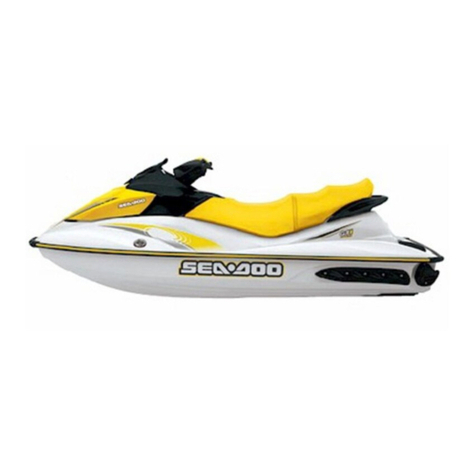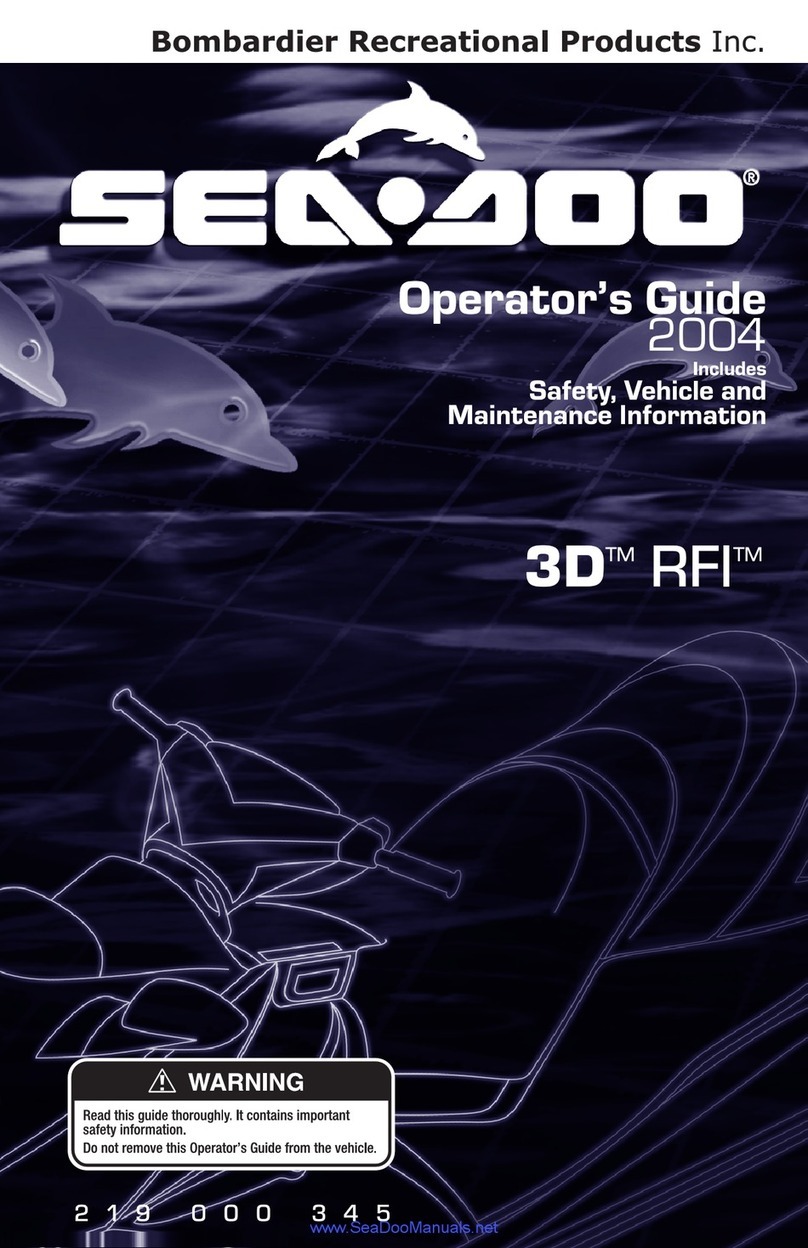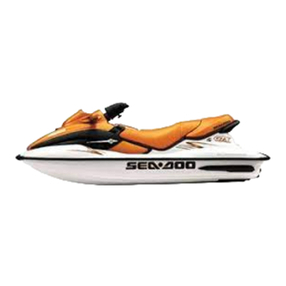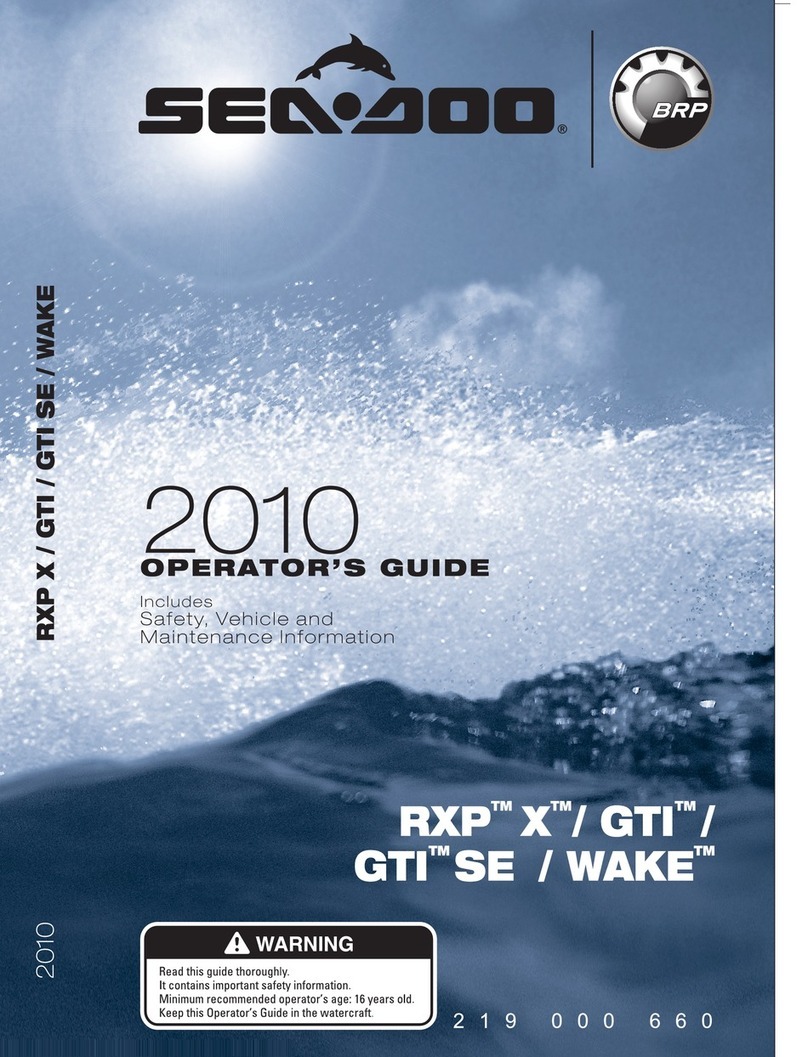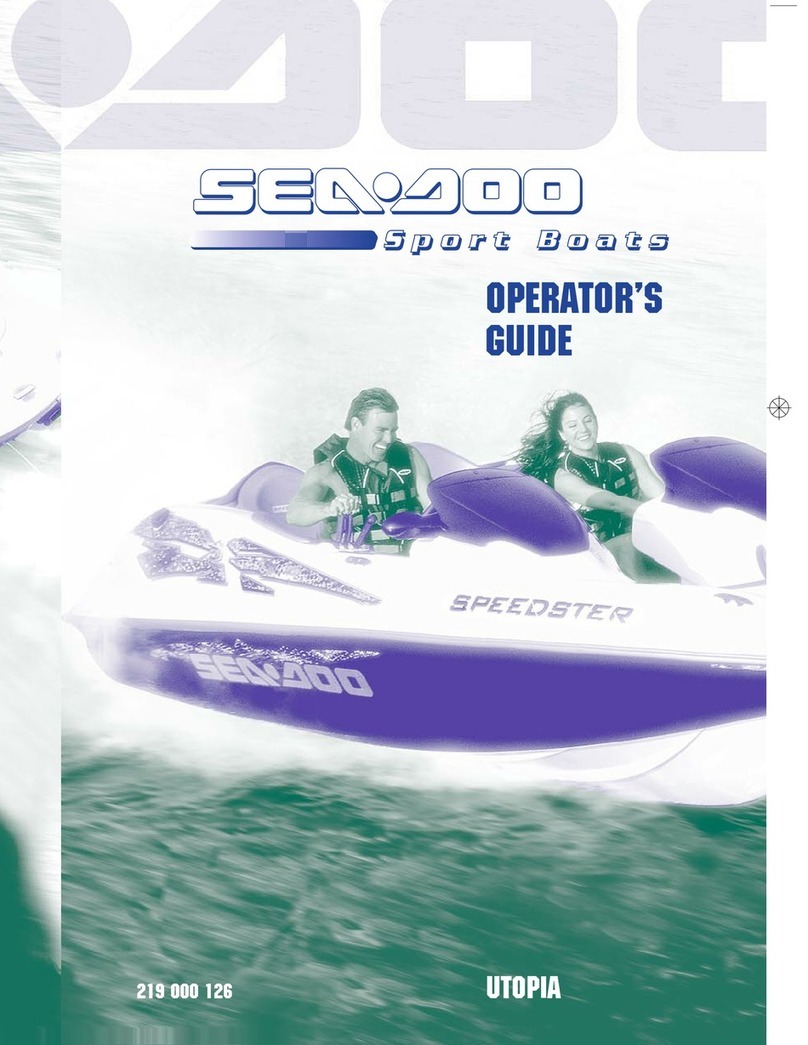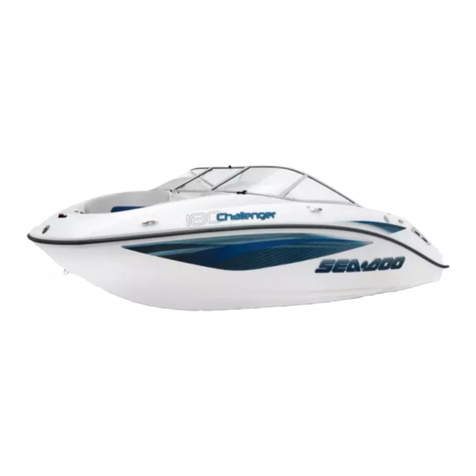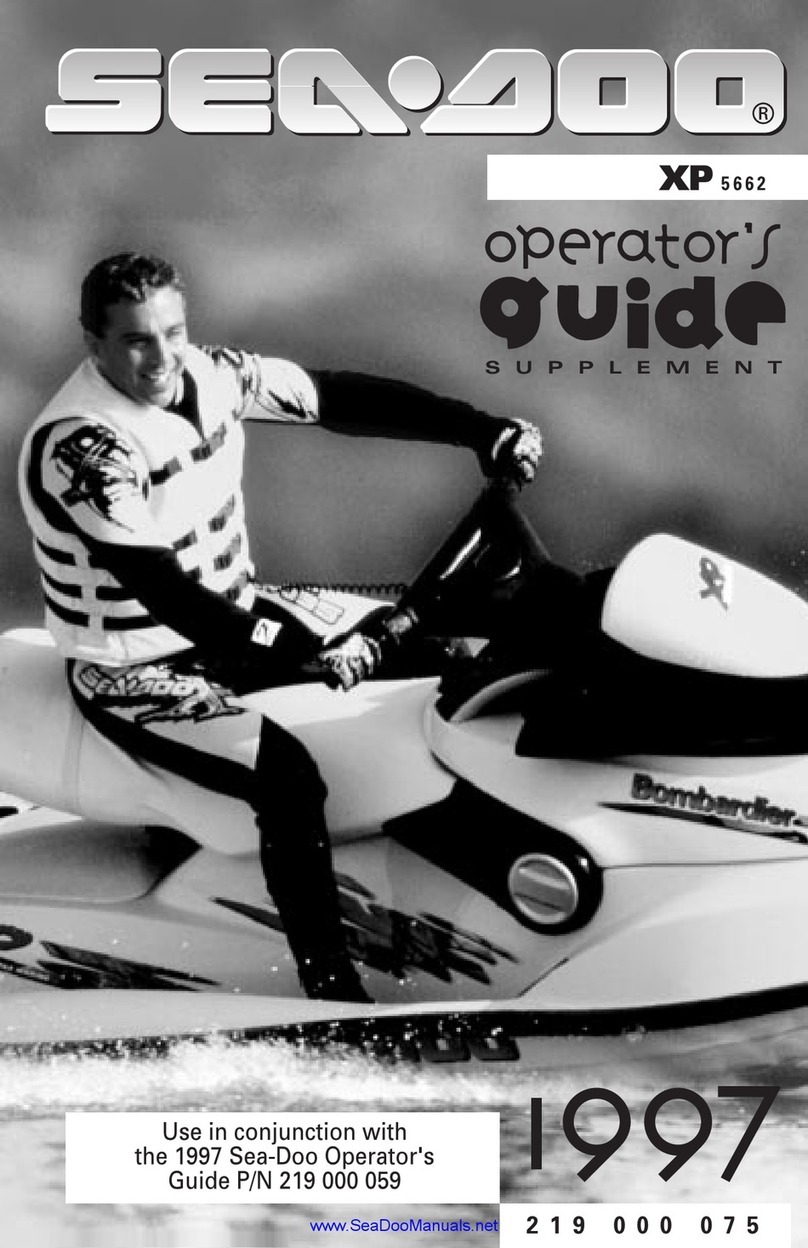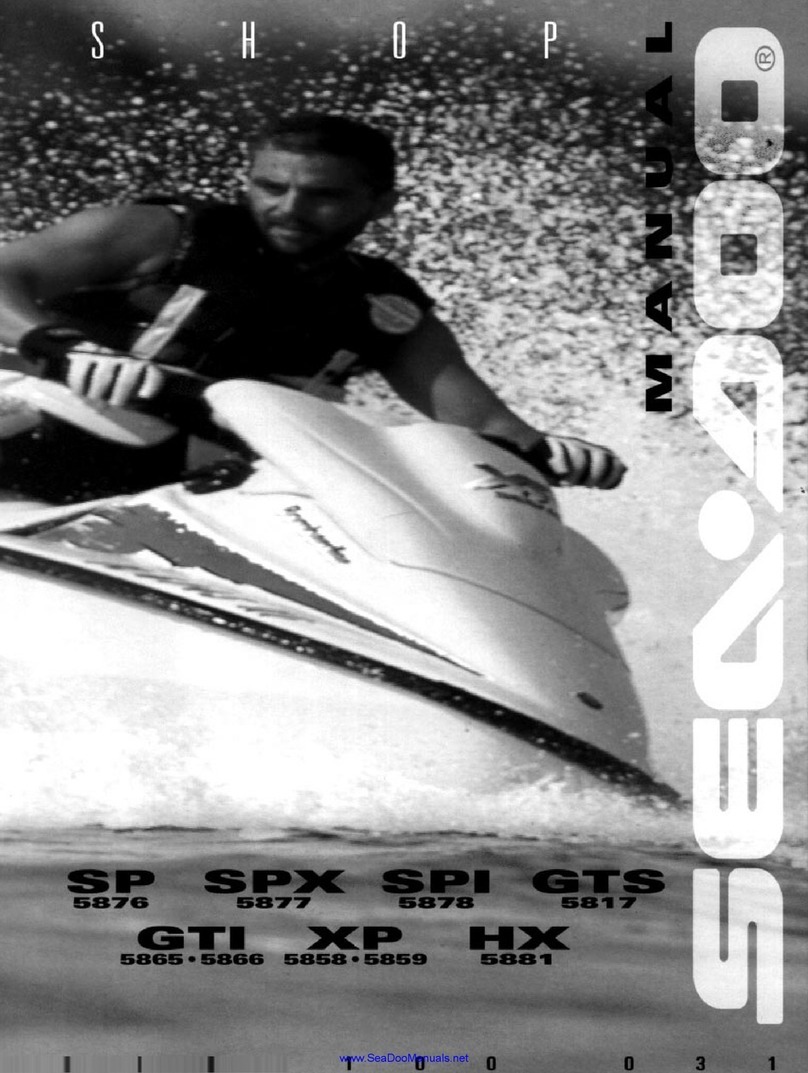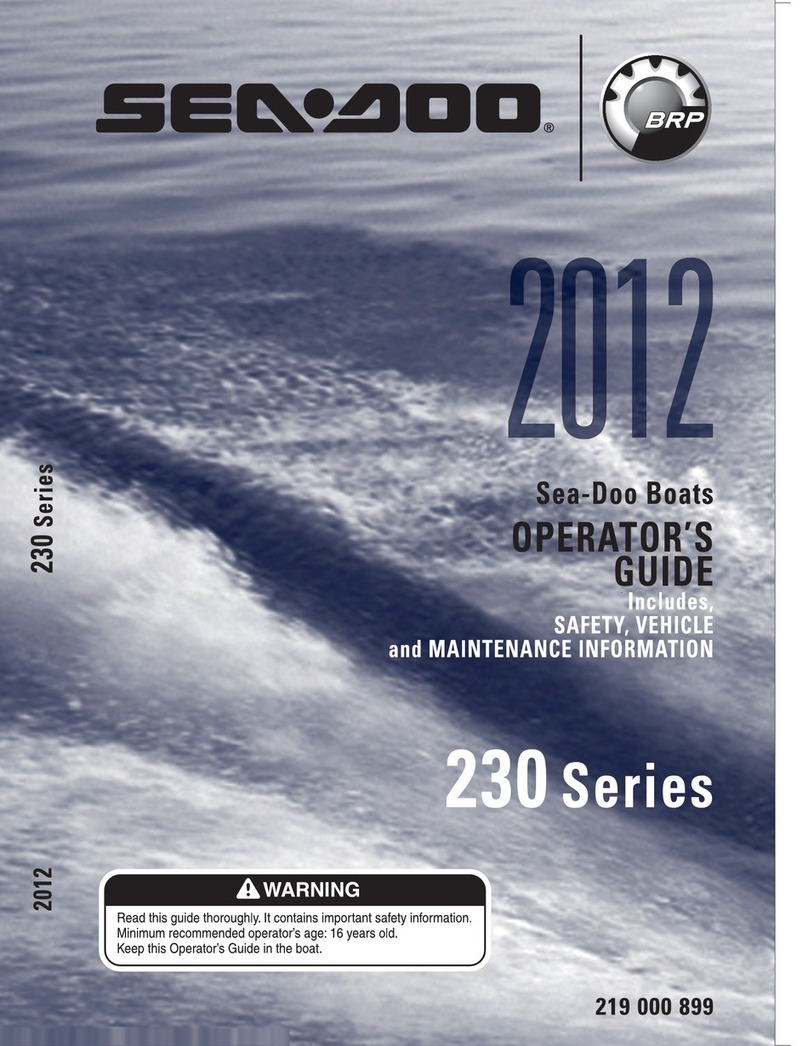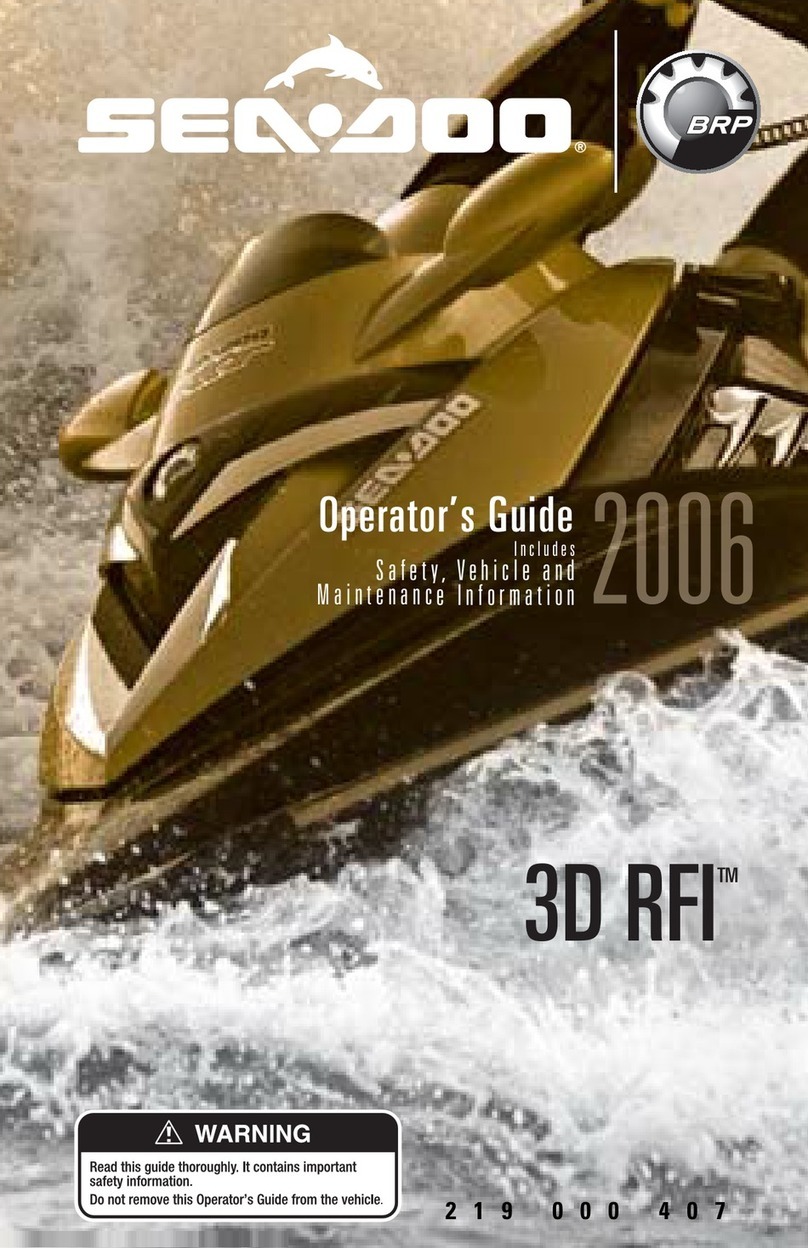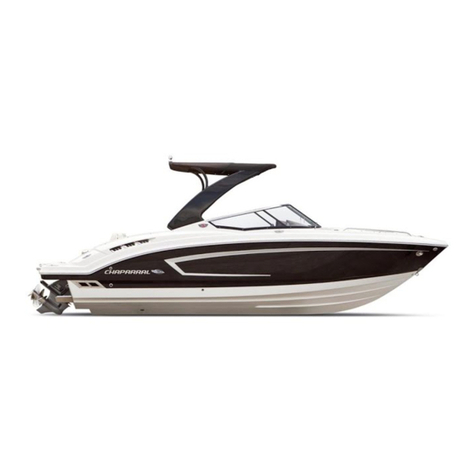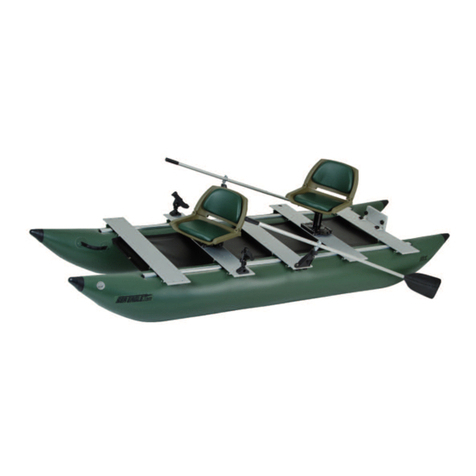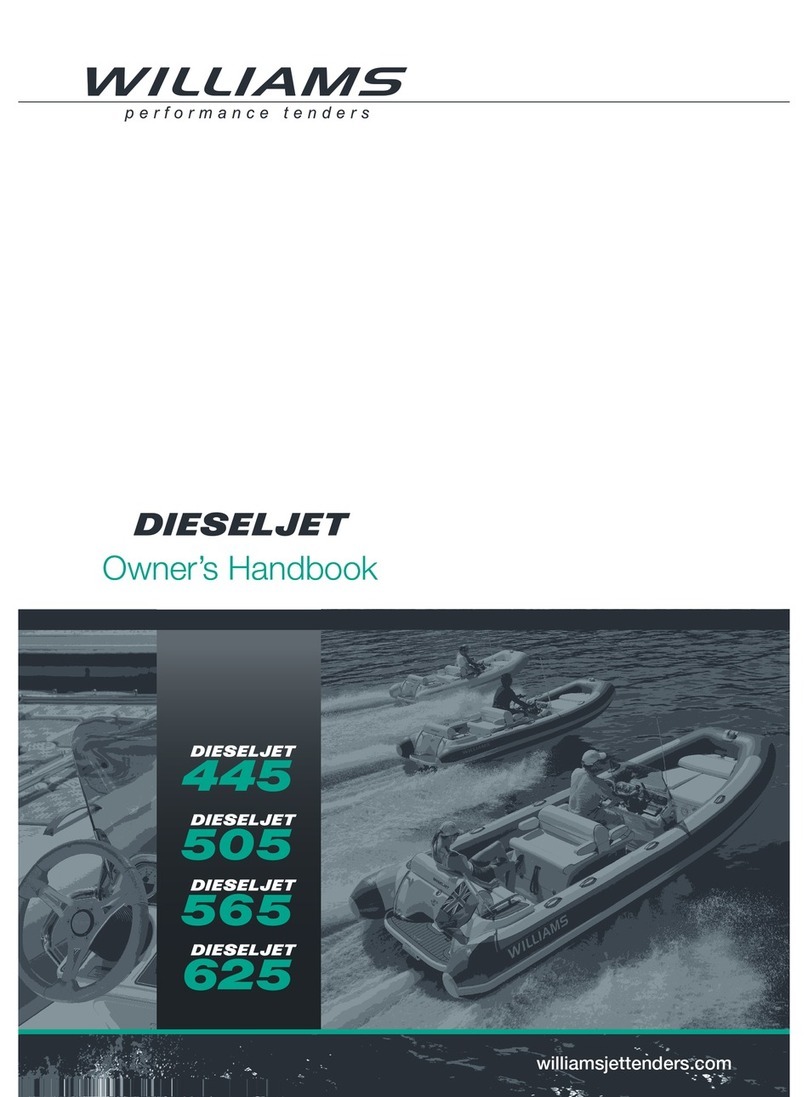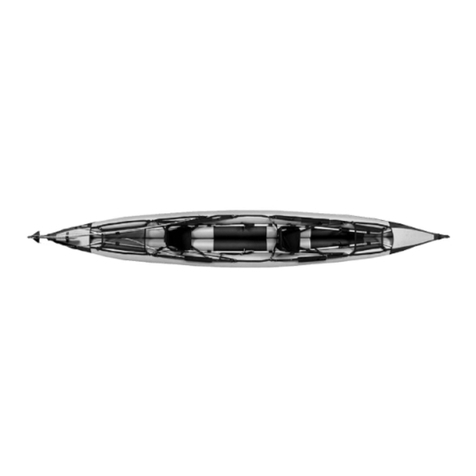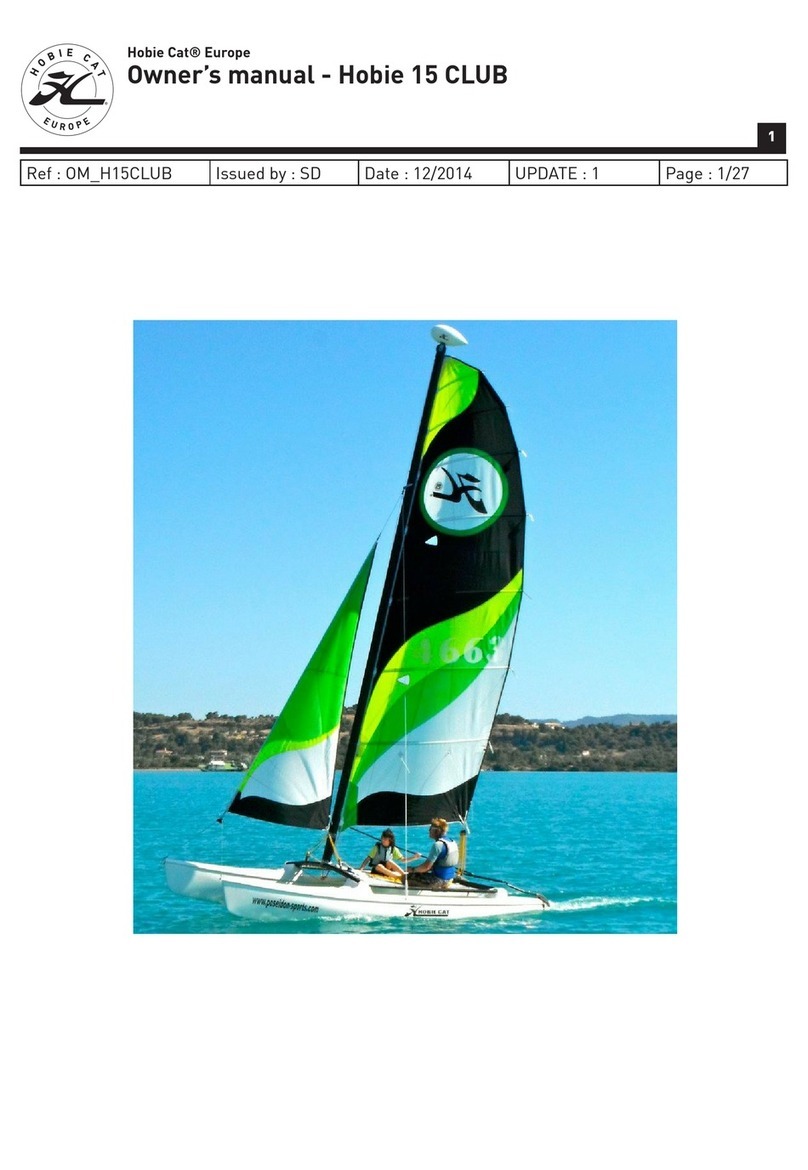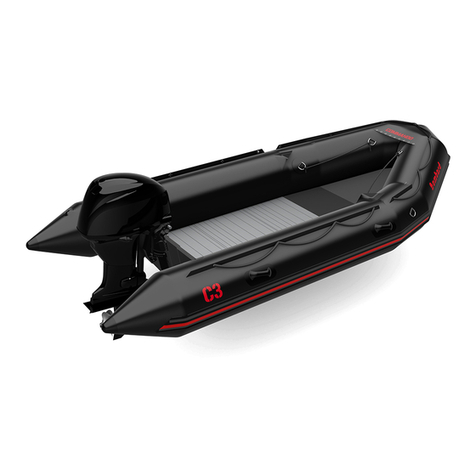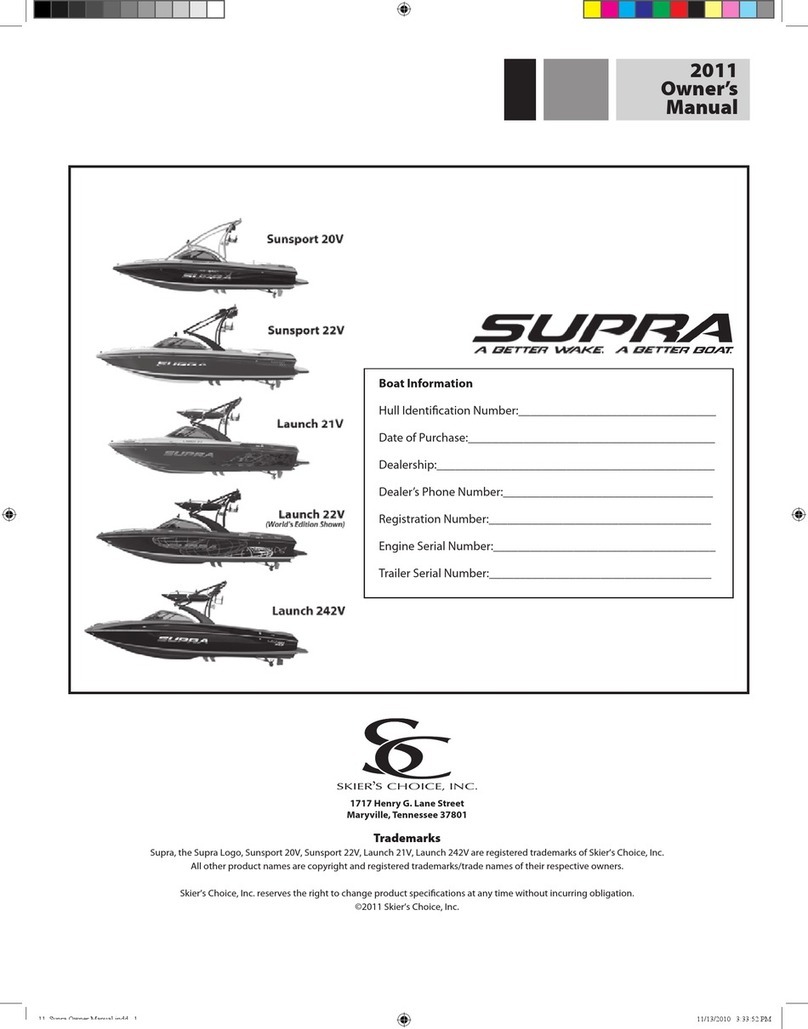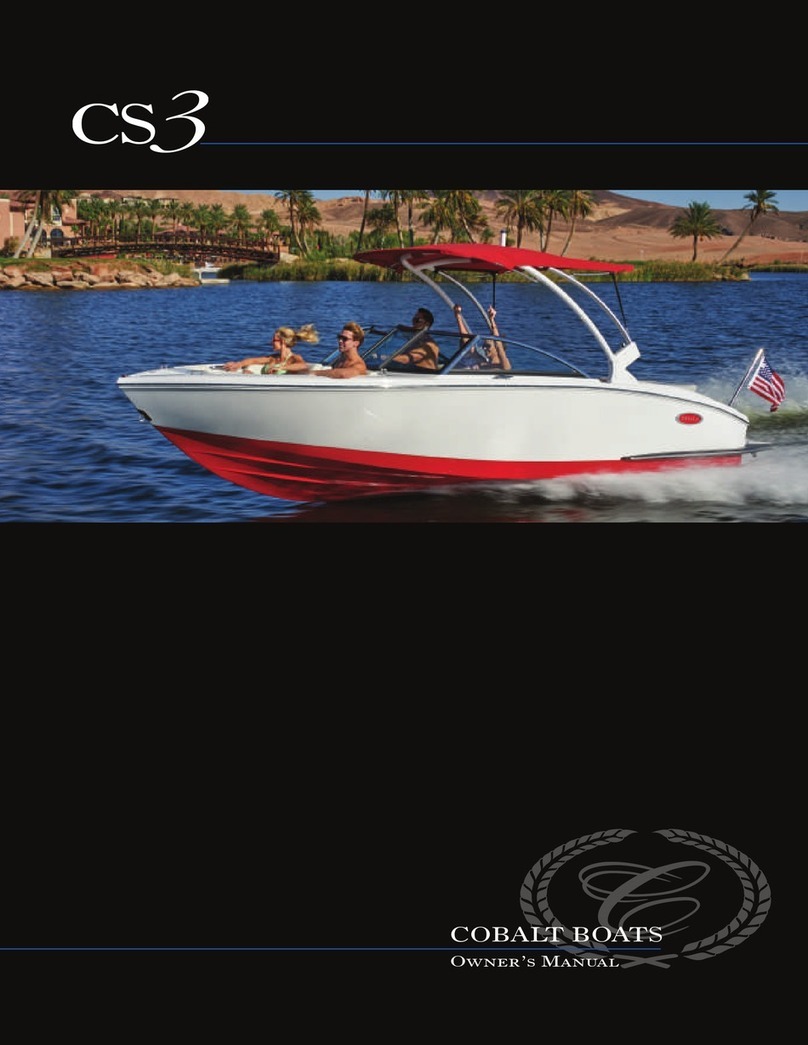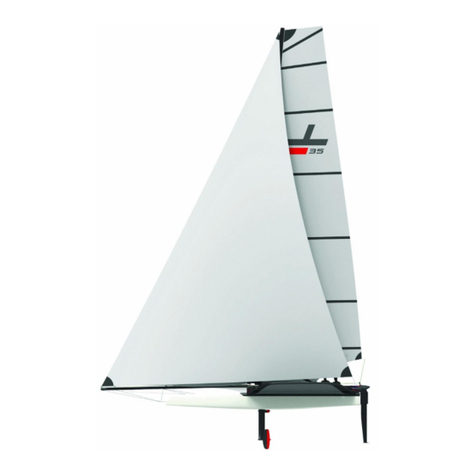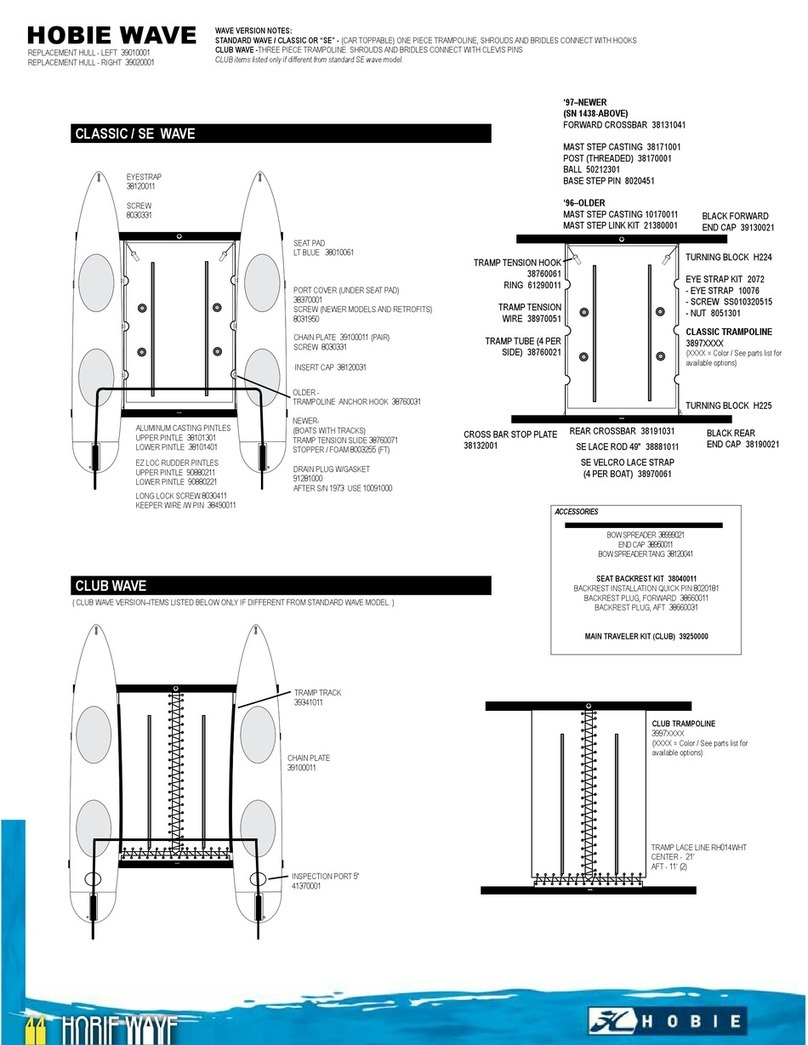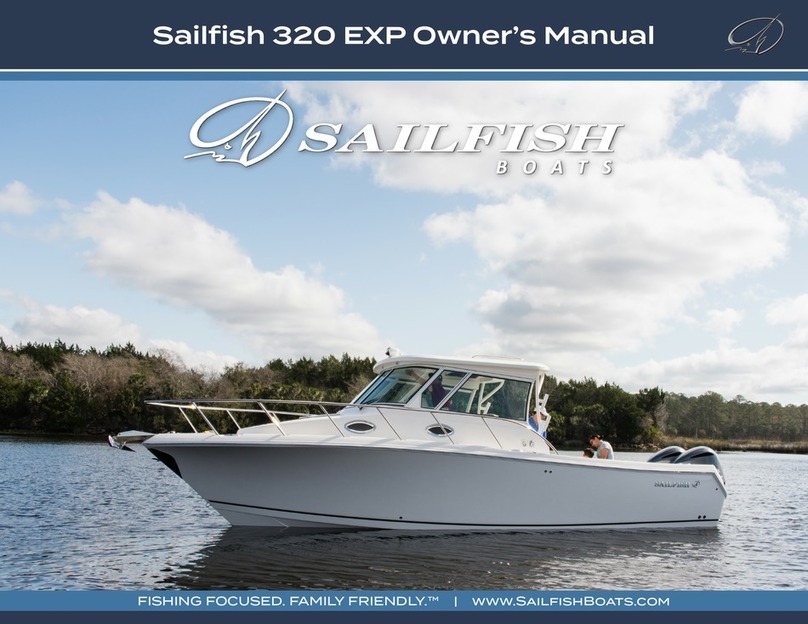
SPECIAL SAFETY MESSAGES
Do not store any objects in areas that
are not designed specifically for stor-
age.
Riding with a passenger makes the
PWC handle differently and requires
greater skill.
This PWC comes equipped with front
and rear eyelets for mooring the wa-
tercraft or for attachment on a trailer.
It cannot be used to attach a tow rope
for a skier, tube or wake boarder. Do
not use these attachment points or any
other portion of the watercraft to tow
a para-sail or any other craft. Personal
injury or severe damage may occur.
Certain PWC models come equipped
with tow eyelets which, can be used
to attach a tow rope for a skier, tube
or wake boarder. Do not use these at-
tachment points or any other portion of
the watercraft to tow a para-sail or any
other craft. Personal injury or severe
damage may occur.
Combustion engines need air to op-
erate; consequently this PWC cannot
be totally watertight. Any maneuvers
such as turning constantly in tight cir-
cles, plunging the bow through waves,
or capsizing the watercraft, that cause
the air inlet openings to be under wa-
ter may cause severe engine problems
due to water ingestion. Refer to
OP-
ERATING INSTRUCTIONS
subsection
and the
WARRANTY
section contained
in this Operator's Guide.
Engine exhaust contains carbon
monoxide (CO), which can cause seri-
ous health problems or death if inhaled
in sufficient quantities. Do not operate
the PWC in a confined area or allow
CO to accumulate around the PWC,
or in enclosed or sheltered areas such
as when docked, or when rafting. Be
aware of the risk of CO emanations
from exhaust of other PWCs.
Know the waters in which the water-
craft is to be operated. Current, tides,
rapids, hidden obstacles, wakes and
waves etc. can affect safe operation.
It is not advisable to operate the wa-
tercraft in rough waters or inclement
weather.
In shallow water, proceed with caution
and at very low speeds. Grounding or
abrupt stops may result in injury and
watercraft damage. Debris may also
be picked up and thrown rearward by
the jet pump onto people or property.
Keep the tether cord attached to the
operator's PFD or wrist (wrist strap
required) at all times and keep it free
from snagging on the handlebars to
help ensure the engine stops should
the operator fall off. After riding, re-
move the tether cord from the engine
cut-off switch to avoid unauthorized
use by children or others. If the op-
erator falls off the watercraft and the
tether cord is not attached as recom-
mended, the watercraft engine will not
stop.
Ride within your limits and level of rid-
ing ability.
Always ride responsibly and safely.
Use common sense and courtesy.
Respect no wake zones, the environ-
ment, and the rights of other users of
the waterways. As the operator and
owner of a PWC, you are responsible
for damage by the wake of your PWC.
Do not let anyone throw refuse over-
board.
While your watercraft has the ca-
pacity of operating at high speeds, it
is strongly recommended that high
speed operation only be applied when
ideal conditions exist and are permit-
ted. Higher speed operation requiresa
higher degree of skill and increases the
risk of severe injuries.
The forces generated on the body of
riders while turning, negotiating waves
or wakes, operating in choppy waters,
or falling off the watercraft, especially
at higher speeds, may cause injury in-
cluding the possibility of broken bones
or more serious bodily injuries. Re-
main flexible and avoid sharp turns.
10 _______ SAFETY INFORMATION ________





















